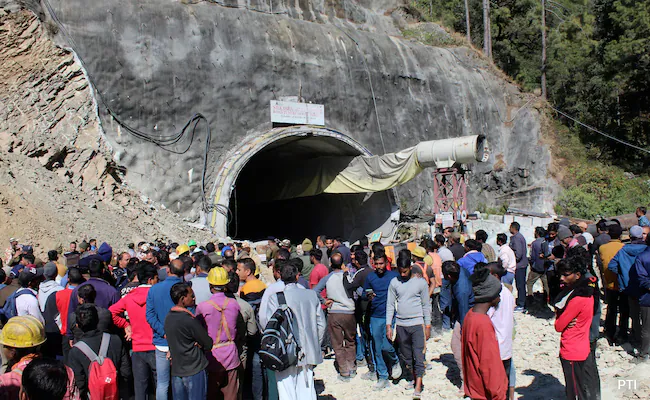New Delhi: Rescue operations to evacuate 40 construction workers trapped under debris at a collapsed tunnel in Uttarakhand’s Uttarkashi district entered Day 5 today. For over 96 hours, the workers have been confined within the tunnel, their lives hanging by a thread.
On November 12, the Silkyara Tunnel project suffered a collapse, trapping 40 construction workers within the rubble.
The trapped workers are being provided with essential supplies of food and medicines. Rescue teams are maintaining regular communication with the workers, ensuring their spirits remain unbroken and their hope alive.
Elite rescue teams from Thailand and Norway, including the one that successfully rescued the trapped children from a cave in Thailand in 2018, have joined forces to aid in the ongoing rescue operation.
The deployment of an ‘American auger’ machine inside the tunnel marked a turning point in the rescue operation. Anticipating an acceleration in the clearing process, the specialized equipment expects to bring the trapped workers closer to safety.
The ‘American auger’ machine arrived in disassembled components at the Chinyalisaur airport, situated over 30 kilometres from the collapsed tunnel on the Char Dham pilgrimage route. The plan involves employing the machine to excavate a passage through the debris of the collapsed tunnel section.
Once the passage clears, install 800-mm and 900-mm diameter segments of mild steel pipes one at a time. Upon completion of this procedure, the workers trapped on the other side of the rubble will be able to crawl to safety.
Yesterday, the rescue operations were hindered by a fresh landslide after over 70 hours of relentless operations. Rescue teams had invested hours in constructing a platform for the ‘American auger’, however, the fresh landslide forced them to disassemble the machine and restart platform construction.
The Challenges
Dr Sudhir Krishna, a former secretary at the Union Urban Development Ministry, has identified several challenges hindering the rescue of the construction workers.
“Himalayan region comprises soft rocks in general. Only in patches, there are hard stable rocks. It’s a difficult situation. There are multiple challenges (in rescue work), landslide is one, land subsidence is the second,” Dr Krishna said.
Subsidence is the gradual settling or downward movement of the Earth’s surface, often caused by the removal of water, oil, natural gas, or minerals through mining or other acitivities.







 Finance
Finance







